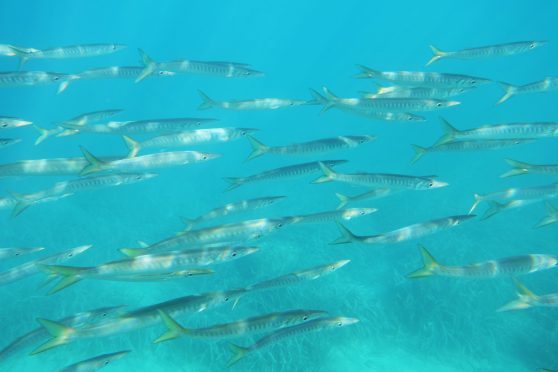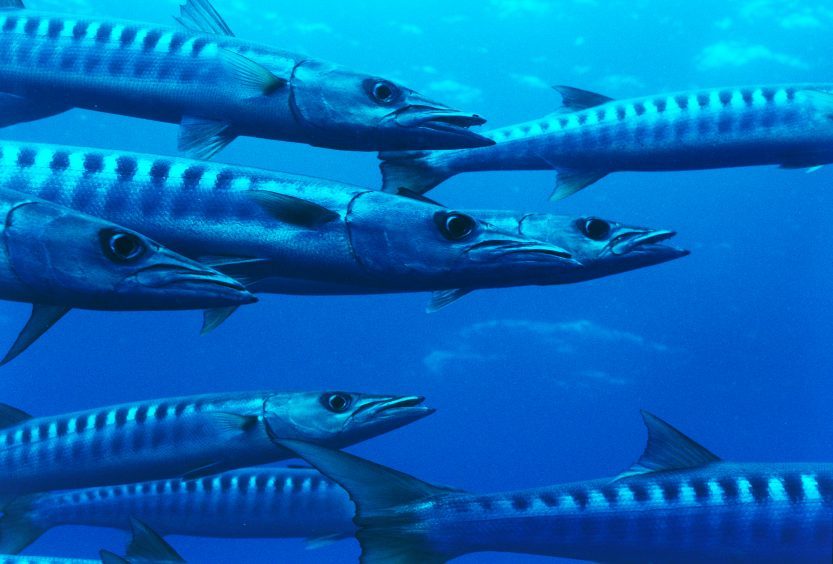They came like a pack of sea wolves; torpedoed-shaped and swimming in such close formation that they moved as one.
This large group of barracuda made a sharp turn and then bore down upon a shoal of sand smelts hanging in the water. The little smelts knew they were in trouble and arched up into a protective ball before plunging downwards to the seabed like a million shards of glittering glass.
Some of the barracuda plunged into the silvery swarm of smelts, but I was unable to determine whether they had caught any as they were now too far out of my vision.
The barracuda regrouped once more and swam right past me, eyeing me up curiously. In all my years of snorkelling in the Mediterranean I had never seen before such a formidable shoal of barracuda and I felt exhilarated by the drama I had just witnessed; the thrill of the hunt – the stalk, the charge and then the lunge. It was nature at its most spectacular – and most brutal.
Yet as my head bobbed up to the surface there was tranquillity nearby, for I could see people sunbathing on a nearby beach here in Mallorca. I looked under again and the barracuda continued to circle me. Barracuda are unfairly tarnished as being aggressive to humans, but attacks are extremely rare and they are harmless fish in the main.
Indeed, these were small barracuda, the biggest no more than a foot long, so I felt totally at ease in their presence. Their curiosity also enabled me to take some photographs with my underwater camera, although they are difficult fish to capture well on film because they blend in so seamlessly with the blue blur of the sea.
As I made my way back to shore, I steered a careful path though several mauve stinger and compass jellyfish. Both these species were present in swarm proportions when I last visited Mallorca in the spring and I was surprised to see they were still so abundant at the year end. It is a mystery why there are so many in the Mediterranean this year and perhaps there is some kind of ecosystem change occurring.
A real joy of Mallorca in October is the numerous migrant songbirds passing through on their way to their African wintering grounds; an avian abundance which is exploited by predators, most notably the Eleanora’s falcon – such a wonderful name for a most elegant bird.
On several occasions we heard their excited high-pitched chattering by towering sea cliffs. These canny falcons nest on rock ledges from August to October to take advantage of the autumn bounty of migrants to feed their rapidly growing chicks.
But soon they too will be on their travels, heading to Madagascar to spend the winter. For the next few months these spectacular coastal cliffs will fall silent once more, the haunting cries of the falcons having been carried away to a far-off land.
Info
By nesting on sea cliffs, Eleanora’s falcons can pick off exhausted migrant songbirds as they make landfall from the sea. For the rest of the year, they mainly eat flying insects such as dragonflies and beetles.

